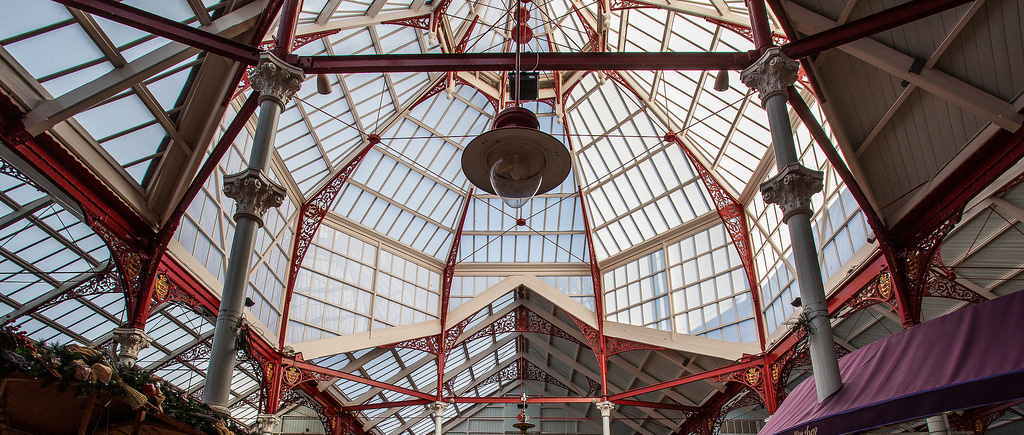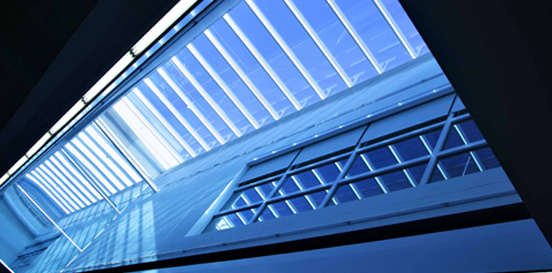
Patent Glazing

Welcome to Lonsdale Patent Glazing and Rooflights, precision manufacturers of contemporary and traditional sloped glazing systems for commercial and domestic buildings. We offer a wide range of aluminium systems for glass roofs for small and large projects. From major stations, museums, shopping centres, schools and universities to modest domestic extensions and bespoke projects, we have the right skylight at the right price. Patent glazing has developed over the years and is no longer only suitable for unheated spaces such as stations, markets and covered ways as modern systems provide excellent thermal insulation and air-tightness when used with double or triple glazing.
Patent glazing was first used towards the end of the 19th century and the term refers to the number of protective patents taken out by manufacturers at the time that have since lapsed. Importantly, patent glazing is a non-load bearing, dry glazing system where the glass is supported on two long sides and fixed to the structure of the building. It is designed to support itself and cope with wind and snow loading, but is classed as a ‘cladding’ and does not contribute to the primary stability of the building.
-

Call 0208 801 4221 For a Competitive Quote or Email info@lonsdalemetal.co.uk
We offer stock lengths or a design and fabrication service with all materials, pre-drilled, cut to size complete with all necessary fittings and fasteners ready for immediate installation. Contact us today.
The Design
Traditional glazing bars are typically inverted ‘T’ sections with continuous beads that snap in either side of the stalk and retain single glazing between gaskets. These are ideal for unheated spacers such as station roofs, markets, covered walk-ways, verandas and canopies.
Modern sloped glazing systems are typically box design and incorporate a thermal break and continuous screw on pressure plates to clamp double glazed units firmly in place. The thermal efficiency of these modern patent glazing systems, enables designers to make best use of natural daylight and improve the carbon footprint of the building by reducing the need for artificial light. Sophisticated four edge support glass roof systems are available providing greater air-tightness, thermal performance and non-fragility and feature deeper rebates enabling wider panels to be used and glazing bars spaced at nominal 1000mm centres. These can also accommodate triple glass roof panels for even better thermal efficiency.
Common to all systems are integral drainage channels so if any water does penetrate the caps and gaskets, it is transported harmlessly to the outside of the building. In addition to the wide range of patent glazing systems, a range of fixed, opening and walk-on glass rooflights for flat roofs are available complimented with a range of hipped roof lanterns and skylights. Roof ventilators can be inserted into all the roof glazing systems for both natural day to day ventilation or specialist smoke vents are available for smoke evacuation. We’re keen to share our expertise so get in touch with our friendly, professional team if we can help you with any design, practical or regulatory queries.

Patent Glazing Design and Regulation issues we can help with are:
- Glass Types and Specification.
- Glazing Bar Spacings and Spans.
- Structural Considerations, Loadings and Stability.
- CDM and Non-Fragility.
- Condensation.
- Fire Performance.
- Safety.
- Environmental and Energy Efficiency.
- Design Durability & Life Cycle Costs.
FAQs
What is the Minimum Pitch for Patent Glazing?
The minimum pitch requirement is 15 degrees, but some systems can be warranted as low as 5 degrees. Please don’t hesitate to contact us if you’re interested in installing patent glazing at a lower pitch. We are happy to point you in the right direction.
Is it Energy Efficient?
Patent glazing is incredibly energy efficient. The thermally broken aluminium frames we use for our patent glazing offer enhanced sealant technology which helps to lock in the temperature of your room and keep out chills and excessive heat throughout the year. The insulating properties of patent glazing reduce the need for constant heating in the winter and keep out the blazing sun in the summer.
What is the Life Expectancy of Patent Glazing?
Following the correct maintenance procedures, your glazing can last up to 45 years.
Is Patent Glazing Liable to Leak?
Thanks to the thorough care and attention to detail our installation engineers give to patent glazing installation, it is not liable to leak. We ensure that the silicone sealant is tightly locked before we leave the site to prevent leaking and lessen the likelihood the silicone will deteriorate.
